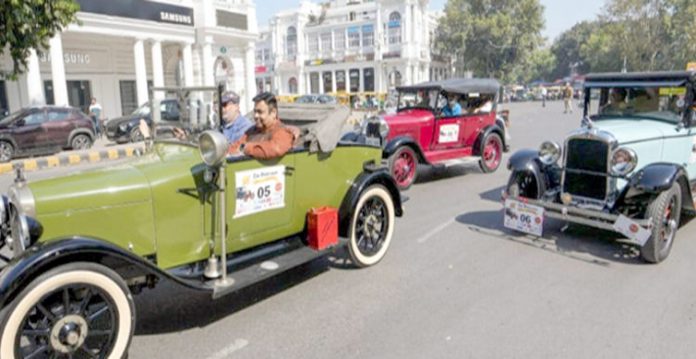While Delhi-NCR strictly implements the rule of scrapping 10-year-old diesel and 15-year-old petrol vehicles, a unique class of vehicles continues to enjoy an extraordinary exemption—vintage cars, many of which are 50, 80, or even 100 years old. These historic vehicles, though much older than most city buildings, are not only exempt from deregistration but are still legally allowed on roads under specific conditions.
India’s laws require that diesel vehicles older than 10 years and petrol ones older than 15 years be deregistered, especially in regions with severe pollution like Delhi-NCR. Such vehicles are barred from use and must either be scrapped or relocated outside the NCR. However, vintage cars remain untouched by this mandate.
According to a notification from the Ministry of Road Transport and Highways, any vehicle over 50 years old and satisfying certain heritage criteria can be registered as a “vintage motor vehicle.” These vehicles are governed by a separate set of rules, enjoying exemptions from regular fitness and pollution checks. The government sees vintage cars not merely as transport but as heritage assets, representing history, culture, and craftsmanship.
Also Read: Delhi Fuel Ban: ₹84 Lakh Mercedes Sold for Just ₹2.5 Lakh
Unlike regular vehicles that contribute to traffic and pollution daily, vintage cars are used sparingly—mostly in exhibitions, rallies, weddings, or film shoots, and that too with prior approval. This infrequent usage ensures minimal impact on air quality or road congestion.
To qualify as vintage in India, a vehicle must be at least 50 years old from the date of its original registration and must not have undergone significant modifications. As of 2025, this includes vehicles manufactured before 1974.
Globally, the criteria differ: the UK typically uses 1930 as the cutoff year, while American standards often recognize 1925 and earlier. The golden age of vintage manufacturing is widely regarded as the period from 1919 to 1930, also known as the “vintage era.”
These cars, devoid of modern features like ABS, fuel injection, or power steering, are celebrated for their artistry, mechanical simplicity, and historical significance. One of the oldest known vintage cars still running is the La Marquise, built in 1884 in France. Fueled by coal, wood, and paper, the steam-powered car reaches a top speed of 61 km/h and has changed hands through several auctions while remaining operational.
India is home to approximately 3,000 vintage vehicles, collectively valued at over ₹350 crore. Though modest in number, their cultural and historical value is profound. The country’s oldest known surviving vintage car is believed to be a 1911 Mercedes Knight.
Other notable models include the 1925 Rolls-Royce Phantom, 1935 Buick Series 40, and the 1947 Packard Clipper. Much of India’s vintage car heritage can be traced back to princely states, where royals once amassed opulent fleets of global marques.
Prominent vintage car brands showcased in Indian collections include Rolls-Royce, Bentley, Packard, Cadillac, Daimler, Delahaye, Mercedes-Benz, Buick, and Ford. These majestic machines are more than relics—they are moving museums of motoring history.
(This story is sourced from a third-party syndicated feed. Raavi Media takes no responsibility or liability of any nature. Raavi Media management/ythisnews.com can alter or delete the content without notice for any reason.)


